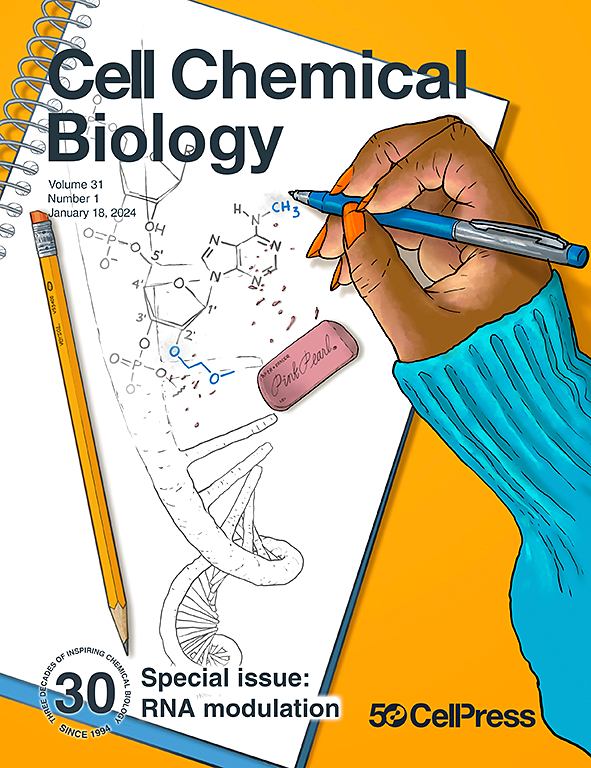N-acetyl-l-cysteine averts ferroptosis by fostering glutathione peroxidase 4
IF 7.2
1区 生物学
Q1 BIOCHEMISTRY & MOLECULAR BIOLOGY
引用次数: 0
Abstract
N-acetyl-l-cysteine (NAC) is a medication and a widely used antioxidant in cell death research. Despite its somewhat obscure mechanism of action, its role in inhibiting ferroptosis is gaining increasing recognition. In this study, we demonstrate that NAC treatment rapidly replenishes the intracellular cysteine pool, reinforcing its function as a prodrug for cysteine. Interestingly, its enantiomer, N-acetyl-d-cysteine (d-NAC), which cannot be converted into cysteine, also exhibits a strong anti-ferroptotic effect. We further clarify that NAC, d-NAC, and cysteine all act as direct reducing substrates for GPX4, counteracting lipid peroxidation. Consequently, only GPX4—rather than system xc−, glutathione biosynthesis, or ferroptosis suppressor protein 1—is necessary for NAC and d-NAC to prevent ferroptosis. Additionally, we identify a broad range of reducing substrates for GPX4 in vitro, including β-mercaptoethanol. These findings provide new insights into the mechanisms underlying the protective effects of NAC and other potential GPX4-reducing substrates against ferroptosis.


n -乙酰-l-半胱氨酸通过促进谷胱甘肽过氧化物酶4来避免铁下垂
n -乙酰半胱氨酸(NAC)是细胞死亡研究中广泛使用的药物和抗氧化剂。尽管其作用机制有些模糊,但其在抑制铁下垂中的作用正得到越来越多的认识。在这项研究中,我们证明了NAC治疗可以迅速补充细胞内半胱氨酸库,增强其作为半胱氨酸前药的功能。有趣的是,它的对映体,n -乙酰-d-半胱氨酸(d-NAC),不能转化为半胱氨酸,也表现出很强的抗铁腐作用。我们进一步阐明,NAC、d-NAC和半胱氨酸都作为GPX4的直接还原底物,抵消脂质过氧化。因此,NAC和d-NAC只需要gpx4而不是系统xc -、谷胱甘肽生物合成或铁下垂抑制蛋白1来预防铁下垂。此外,我们在体外鉴定了GPX4的广泛还原底物,包括β-巯基乙醇。这些发现为NAC和其他潜在的gpx4还原底物对铁下垂的保护作用机制提供了新的见解。
本文章由计算机程序翻译,如有差异,请以英文原文为准。
求助全文
约1分钟内获得全文
求助全文
来源期刊

Cell Chemical Biology
Biochemistry, Genetics and Molecular Biology-Molecular Medicine
CiteScore
14.70
自引率
2.30%
发文量
143
期刊介绍:
Cell Chemical Biology, a Cell Press journal established in 1994 as Chemistry & Biology, focuses on publishing crucial advances in chemical biology research with broad appeal to our diverse community, spanning basic scientists to clinicians. Pioneering investigations at the chemistry-biology interface, the journal fosters collaboration between these disciplines. We encourage submissions providing significant conceptual advancements of broad interest across chemical, biological, clinical, and related fields. Particularly sought are articles utilizing chemical tools to perturb, visualize, and measure biological systems, offering unique insights into molecular mechanisms, disease biology, and therapeutics.
 求助内容:
求助内容: 应助结果提醒方式:
应助结果提醒方式:


